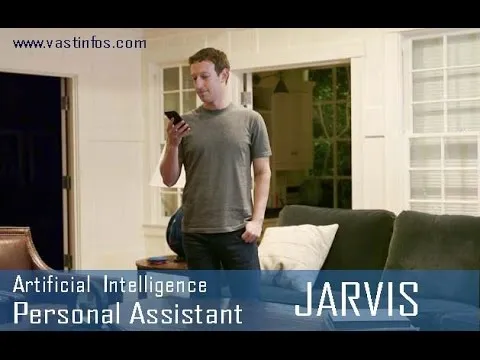Introduction
Internet, no doubt, ushered in an era of dissemination of information at a faster pace and that too through unrestricted participation for all. There was no single entity claiming to own the internet and everyone was allowed to equally partake in it. In fact, the internet was so open that some countries did ban certain sections of the net. Barring the unpleasant, the fact was and is that the internet is quite liberating and open.
By the beginning of this century, we saw information flow increase in leaps and bounds like never before. Emails, Twitter, Facebook, Instagram and others, all allowing immense quantum of information passing from multiple sources to an even larger audience. In the scheme of things this is Internet of Information. If I could call this as the first leap then the second leap was Internet of Things.
What is Internet of Things? In simple language when appliances and equipment used by us got smarter, the question was why not link them to a central controller to control their operation. By smarter I mean, most of these were operated by programmable chips and hence they acted as a point which could be connected to the internet. If they could be connected to the internet, then they could also be controlled through the internet. As an example, you could use your smartphone to switch on your air condition ten minutes before reaching home. Better still, you can use Alexa or Google Home centrally connected to each equipment in your house to be able to control those equipment for you. You could just speak out a command through your smart phone for Alexa to switch on the lights, air condition and water heater about ten minutes before reaching home. How is that for Internet of Things!
Of course, this can further developed to include Artificial Intelligence so that Alexa can gauge the distance of the car from the house (within Alexa’s range) and start the mentioned equipment without your intervention.
Take a look at this video of Mark Zukerberg (Facebook) demonstrating AI 😊
But, this is not it. There will be improvement in each of the above concepts which we discussed but there is an entirely new paradigm coming into play and that is “Internet of Value”. Internet of Value derives positives from ‘Internet of Information’ and ‘Internet of Things’ and delivers something even better.
-----------------------------------------------******---------------------------------------------------
What is Internet of Value?
Internet of Value extends the concept of Internet of Things to the crypto financial world. Much like equipment achieved interoperability to allow Internet of Things, interoperability between cryptos and cryptofinancial activities will allow Internet of Value.
Why Interoperability, you may ask and here’s why. In the real world we developed a mechanism to exchange FIAT of different countries through the concept of Foreign Exchange but in case of blockchain, the cryptocurrencies are more or less still working in silos. What I mean is an ecosystem of bitcoin will trade in an ecosystem enabled to trade bitcoin and this ecosystem will be specific to bitcoin. At the moment there are nearly 1000 such tokens being traded for different purposes but hardly can interoperate without an exchange. This is where the silo comes in.
So, the need of the hour is to be break the silos and bring in interoperability between different blockchain ecosystems. This is exactly what “Fusion” tries to achieve and presents the concept of “Internet of Values” to the world.
-----------------------------------------------******---------------------------------------------------
Tell me more about Fusion
Well, the whole concept of Internet of Value is based on cryptofinance which in other word is over the blockchain; of course, blockchain itself being another revolutionary concept of the 21st century. Fusion has given this entire concept a deep thought and that is what we will see from hereon.
In their own words:
FUSION is an inclusive public blockchain that provides the infrastructure and architecture for fully fledged financial functions on the blockchain.
FUSION is opening a new era of cryptofinance for the Internet of Values. By cooperating with financial institutions, cryptocurrency companies, third-party app developers, academia and the broader cryptocurrency community, FUSION is building a broad finance ecosystem on the blockchain.
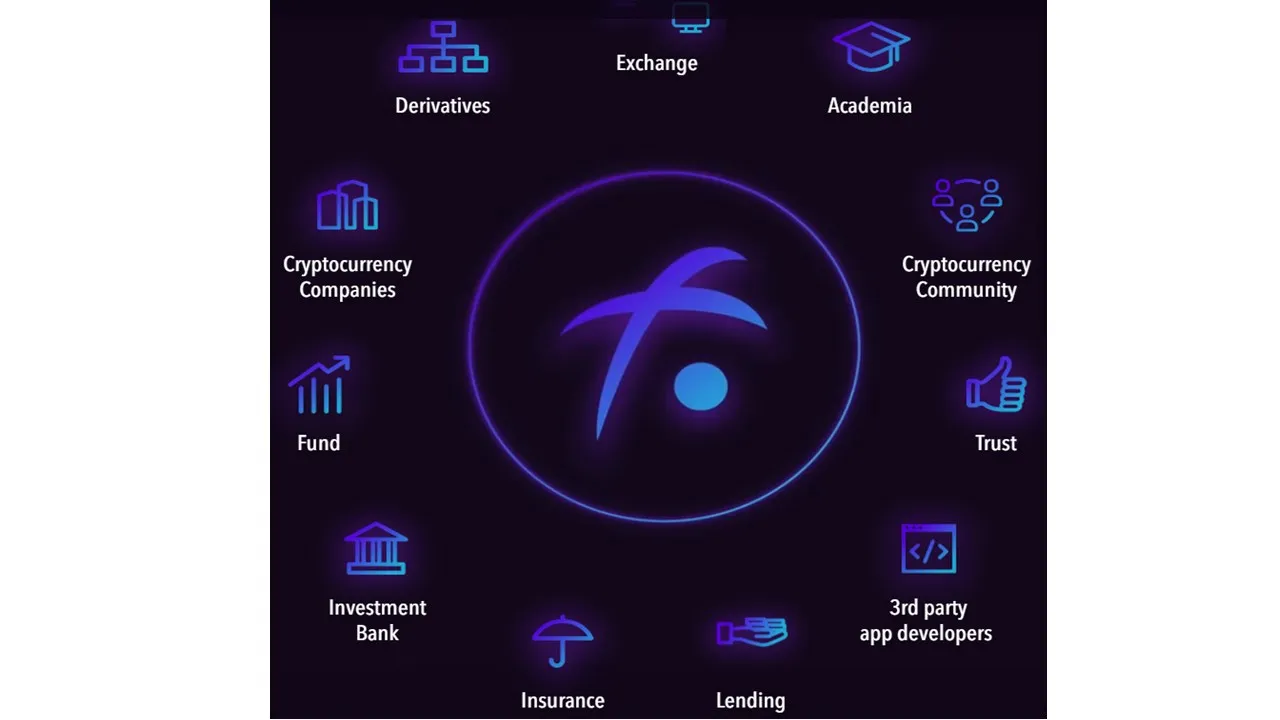
In a nutshell, Fusion will bring about the infrastructure necessary for all parties to operate with each other and therefore, bring down cost, improve efficiency and speed, and more importantly pass on more value to all parties involved.
-----------------------------------------------******---------------------------------------------------
How will Fusion help propel forward the “Internet of Values”?
At the heart, Internet of Values’ success depends on interoperability, scalability and usability of the blockchain solution. However, the current blockchain silos prevents interoperations. If a Bitcoin ecosystem has to communicate with an Ethereum ecosystem then it will necessarily need a cryptocurrency exchange for converting Bitcoin to Ethereum (or vice-versa) and then each being used in their own ecosystems. Add to this the fact, that blockchains have not come anywhere close to moving off-chain financial activities to the chain, leave alone executing them.
Fusion intends to create a solution to handle these issues and many more which are not highlighted. Fusion is building a public chain which can allow different tokens to be mapped to the public chain. Bringing all the tokens on the same chain will allow them to interact as much as enter financial agreements through multi-token smart contracts. This, therefore, increases the interoperability of the tokens and in turn propels the Internet of Values. In addition, the Fusion public chain can interface with centralized organizations and bring off-chain datasources to improve scalability of the chain. The usability hereafter should be a matter of time, as more and more enterprise and off-chain communities see the cost benefits that the blockchain offers and quickly adopt the solution.
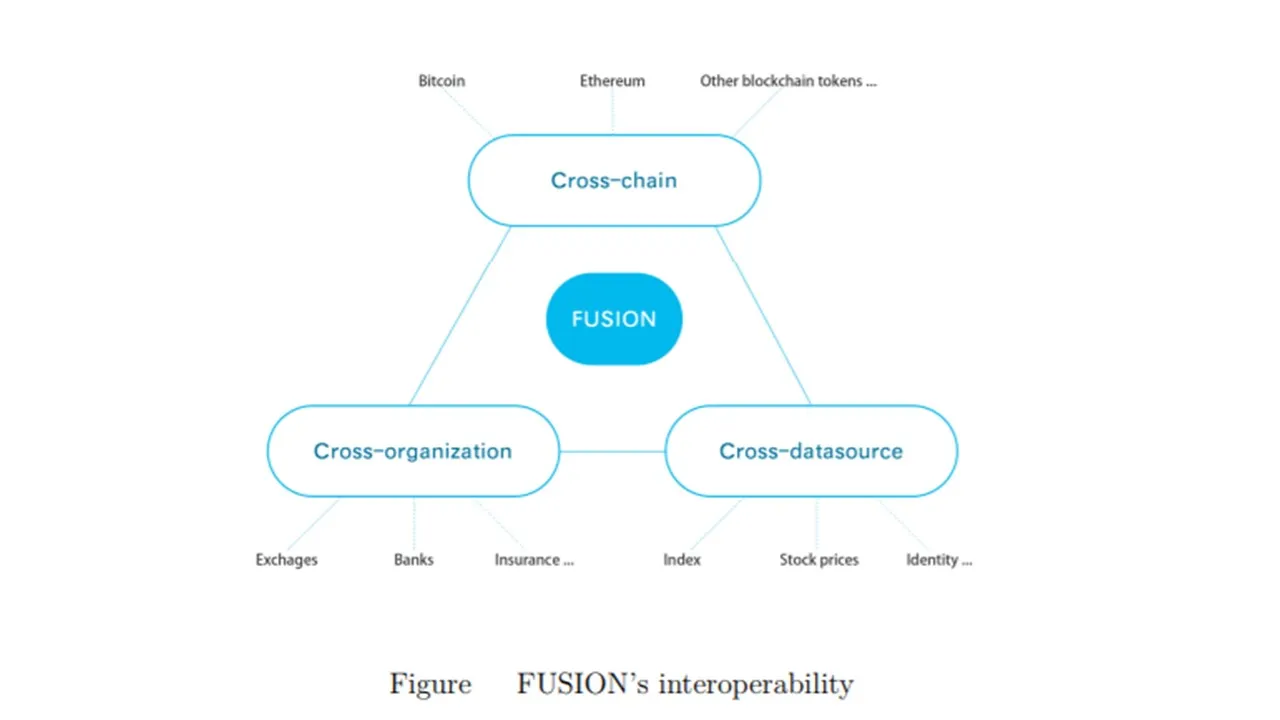
With this comes few other challenges like making the Fusion platform secure, reliable and efficient for various token and smart contract to run on it, as much as processing capabilities for such a large quantum. In view of these requirements more than challenges, Fusion has envisaged a robust Architecture covering new technologies like Distributed Control Rights Management, Smart Contracts for cryptofinance and implement a Hierarchical Hybrid Consensus Mechanism (HHCM). An overall picture of such an architecture is as shown below pictorially.
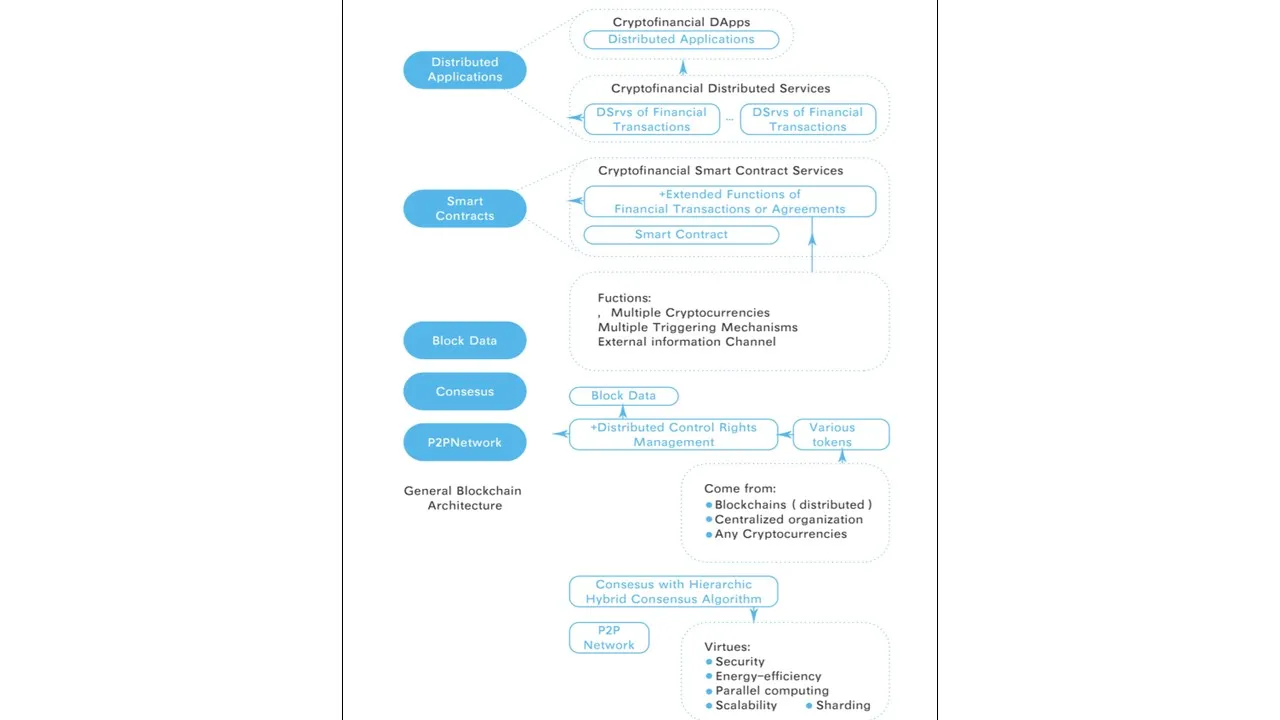
Let’s briefly understand the base technologies.
Distributed Controls Rights Management (DCRM) – The idea here is to hand over the control of digital assets to decentralized nodes for management which spreads the private key across these nodes. In doing so, no single node can obtain control over the digital asset under DCRM.
Cryptofinancial Smart Contract (CSC) – The Cryptofinancial Smart Contract is specifically designed for the Fusion platform and is unlike a single cryptocurrency smart contract. The CSC allows dealing in one or more digital assets to fulfill obligations among multiple parties, by defining the relation and value interaction conditions for a particular time and location between the parties.
Hierarchical Hybrid Consensus Mechanism (HHCM) – This mechanism is used by Fusion to stratify computational work required for generation of blocks by adopting suitable consensus mechanism in different layers. HHCM introduced the concept of grouping to achieve private keys. Not only that but also combines the advantages of PoW and PoS to balance safety, efficiency, scalability and other aspects.
-----------------------------------------------******---------------------------------------------------
What are the benefits of having a cross chain financial platform?
The benefit of such a platform are innumerable and in many cases not known to the world yet. But for the sake of discussion let’s take an example of an individual intending to convert Steem to Ethereum so that he can execute a smart contract with Ethereum.
Obvious assumption is that the individual has Steem with him and Steem is not readily used for Smart Contracts being a newer cryptocurrency
Step 1: Trade Steem at Exchange to buy Ethereum [Cost involved due to exchange rates]
Step 2: Obtain Ethereum
Step 3: Execute Smart Contract
Step 4: Pay Ethereum [Cost Involved in execution]
Step 5: Complete Transaction
Now, consider the case of cross-chain financial platform where the smart contract can be defined in terms of Steem and/or Ethereum.
Step 1: Execute Smart Contract with Steem
Step 2: Pay Steem
Step 3: Complete Transaction
Notice that not only the steps but also the cost involved reduces. This is the simplest of examples. Now, look at scenarios involving loans, mortgages, derivatives and other complex financial transactions and you will see the merit in the Fusion platform for ease, speed, cost and efficiency.
-----------------------------------------------******---------------------------------------------------
Use Cases
Letter of Credit in International Trade
Those of us who understand escrow or L/C in case of international trade would be aware that money in this case can be held by a third party, bank in this case, until the contractual obligations are fulfilled. Once the contractual obligations are fulfilled, the escrow or L/C will release the asset (money in this case) to the party which fulfilled the obligation. This is a classic case where there is an issue of distrust between the parties and therefore a third party like a bank has to be the witness to the association and the party promising to pay. Imagine the cost involved at each stages.
Now, consider the Fusion world. The parties involved in importing and exporting of goods can get into a smart contract of L/C Credit (say) and the contract can be executed at the point of completion of the obligation between the parties. Obviously, this would be a cryptofinancial smart contract defining the relation between the parties involved, the time of execution and the location. The best part is that it can be any cryptocurrency and it need not hinge on a third party to complete the execution, and therefore, it eliminates third party completely, which is a bank in this case. This is an example of cost-effective and trustless solution to an L/C.
Few more Use Cases from the Fusion Team:
FUSION Use Case 1: Risk-free Token Loan
FUSION Use Case 2: Risk free contracts market
FUSION Use Case 3: Mortgage smart contract
-----------------------------------------------******---------------------------------------------------
What are the benefits of being able to use traditionally bank-operated financial tools in a decentralized manner between cross chain users?
Our example on the Letter of Credit earlier enumerates a case of a bank operated financial tool to the extent of it being a monopoly. When I say monopoly, I mean that banks may differ but L/C is executed by a bank alone; seldom is any other third party involved.
Now, when such a scenario is looked through the lens of the Fusion ecosystem, suddenly not only does the tangible aspects like third party involvement and cost go down but also intangible aspects like trust is managed through the decentralized medium of L/C execution.
One other aspect is that since all the bank operations happen in a centralized manner, the decentralization of operations may lead to many a benefits which will be realized as we start using them. Some of them could be the complete elimination of a real world financial tool or for that matter discovery of a completely new crypto-tool, replacing the existing ones.
Since Internet of Value intends to create a new system of value realization and not just copy existing system, the benefit realization will be immense. This would be akin to email system replacing post system under Internet of Information; notice that email system was completely different from post system and did not try to mimic it.
-----------------------------------------------******---------------------------------------------------
Parting Words:
At the beginning of the article we saw a video where Mark Zukerberg demonstrates the possibilities that exist with Internet of Things. Taking that as the base it is easy to fathom that Internet of Values too has immense potential. This is more so as we have just about got started with blockchain and Fusion as a robust multi-party platform in this space. There is lot of value to be realized and more importantly there is lot of value to be discovered!
-----------------------------------------------******---------------------------------------------------
So, who are the great minds behind Fusion?
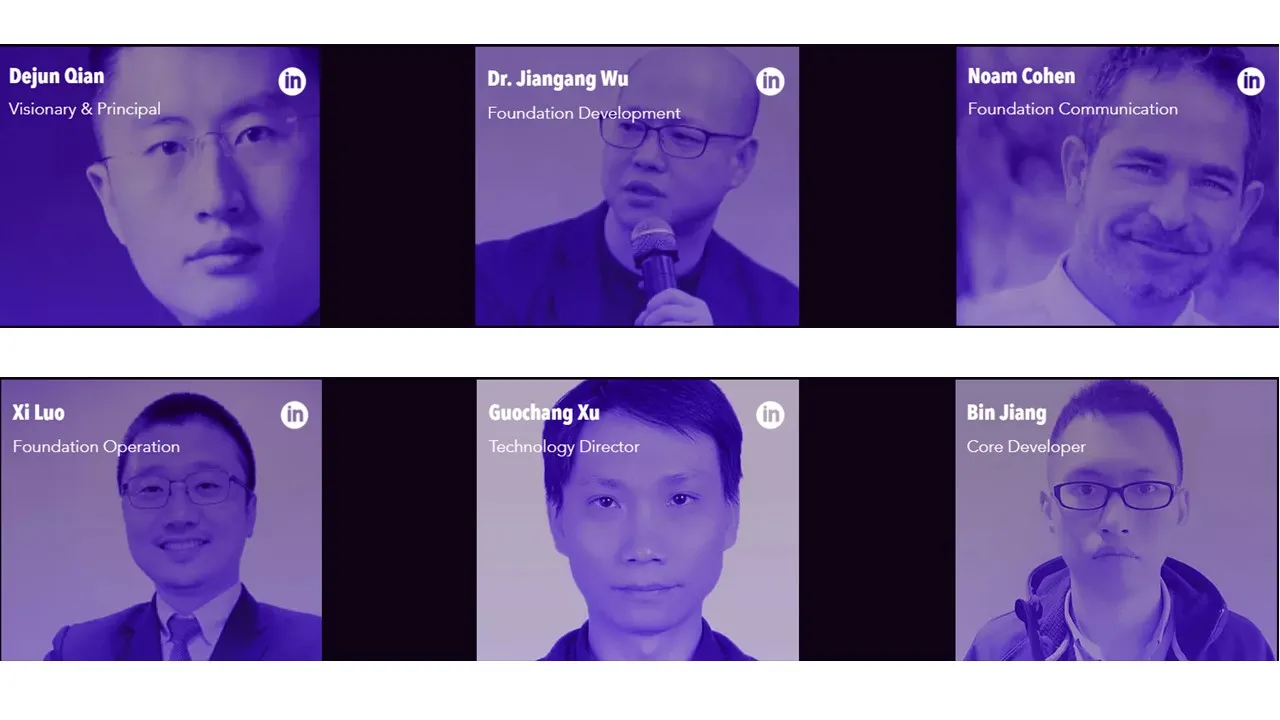

-----------------------------------------------******---------------------------------------------------
It is also recommended that readers understand more about Fusion through any of the following informative resources.
- Fusion Website
- Fusion Summary
- Fusion WhitePaper
- Fusion Telegram
- Fusion Twitter
- Fusion Reddit
- Fusion BitcoinTalk
- Fusion Medium
- Fusion Videos Page
- Fusion Linkedin
- Fusion Facebook
- Fusion Github
-----------------------------------------------******---------------------------------------------------
This article is written in response to originalworks’ call on authors’ thoughts on Fusion. It can be read here.
Image Courtesy: Fusion Resources
Disclaimer: The videos added in the article belong to the users who have posted them on youtube. The Author does not own them nor validates that they belong to the ones who posted them on youtube. The videos are included to give some additional information about the subject being discussed.
fusion2018
